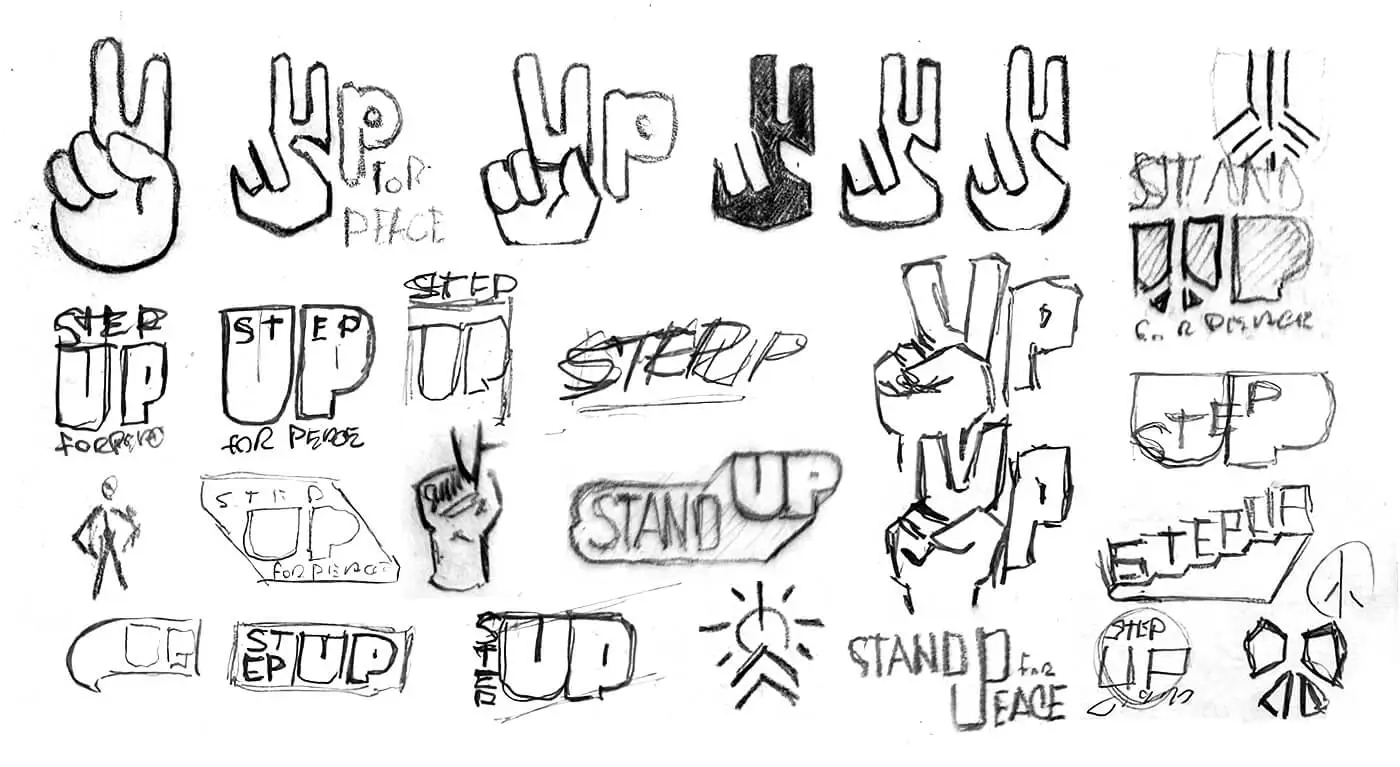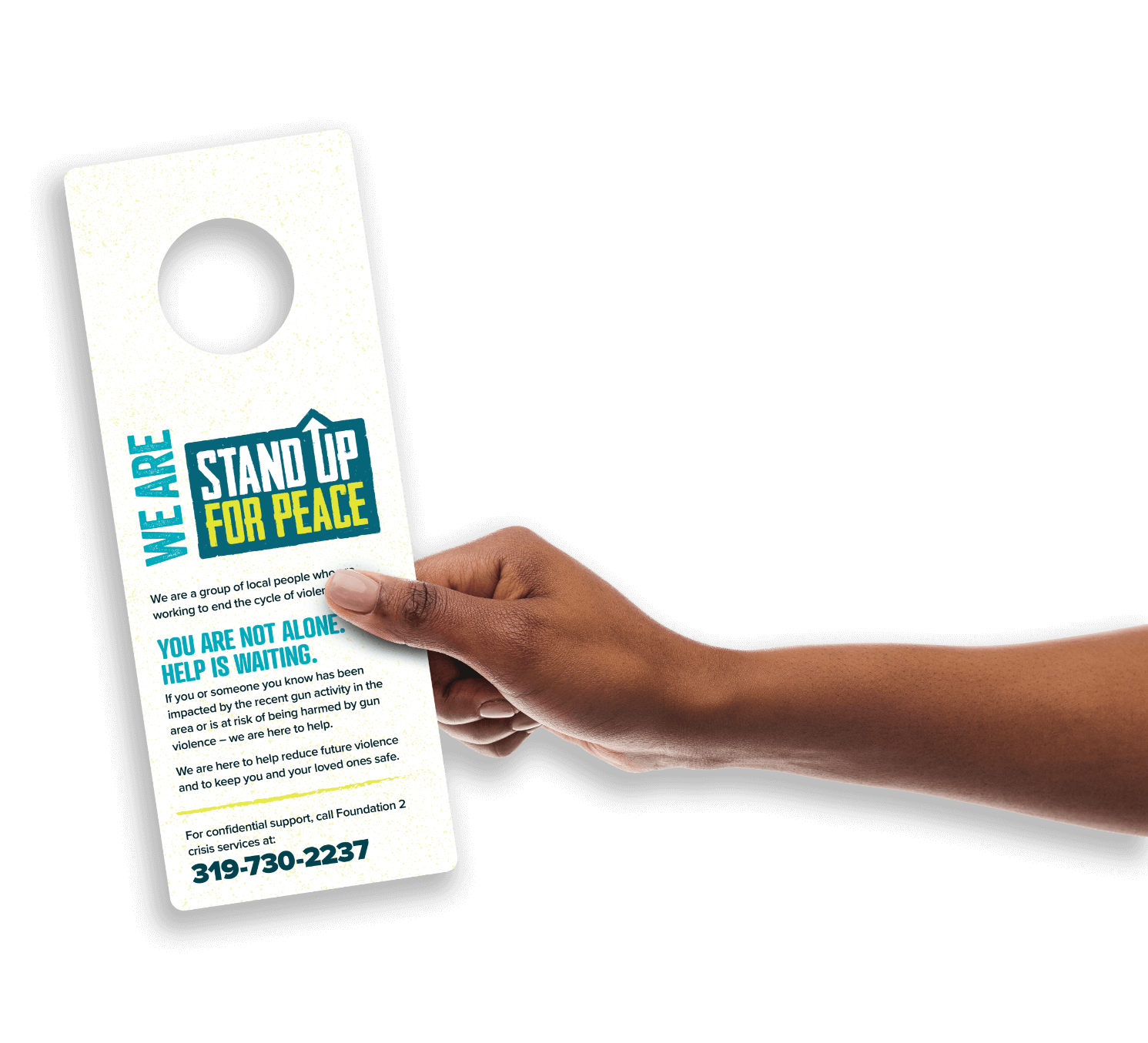Our Approach
We met with community members and the partner organizations—including Linn County Public Health and Foundation 2—to gain a comprehensive understanding of the initiative. This also set the groundwork for ongoing collaboration throughout the project to ensure success and commitment from all involved.
Our conversations led us to identify three key audiences for our messaging:
• Affected neighborhoods
• Individuals at high risk of violence or victimization
• Initiative partners
A brand is only as strong as its identity and only as good as how it’s used, so we conceived a brand rollout plan to educate the community. This included key components to create a public engagement campaign with a focus on anti-gun-violence messaging under the new branding.
People connect with people, so we emphasized the grassroots nature of the initiative, providing outreach, resources, and support to specific neighborhoods that had experienced gun violence.
From there, we set out to develop naming options, design direction, and messaging to convey the purpose of the initiative.
The Work
The following were vital components of our brand development:
• Name options
• Logo & brand standards
• Key messages
Through research, concept brainstorming, and active collaboration, our team developed a new name that connected with the essence of the mission and served as a call-to-action for everyone: Stand Up for Peace.
The logo and brand standards gave life to the new name, visualizing the direction and providing an instant connection.

Key messages tailored to the three audiences articulated the mission and provided consistency while offering nuance to resonate with specific groups.
Our subsequent brand rollout plan helped to ensure clarity, build enthusiasm, and raise awareness, including tangible tools like door hangers using the new design and messaging to spread the word throughout affected neighborhoods.
The concept and components of the campaign supported the grassroots goal, offering assets and messaging that people could use to directly connect with people throughout core neighborhoods.

The Results
Equipped with a strong name, compelling logo, and cohesive messaging, Stand Up for Peace became a rallying cry for community involvement and action. The campaign helped achieve integral goals:
• All community partners using the same language to describe the initiative.
• Established a visible presence in specific neighborhoods affected by gun violence.
• Community recognition of the initiative and its mission, purpose, and value.
• More community involvement and engagement through donations, volunteerism, and advocacy.
The campaign is still in use, helping to unite our citizens and make our city safer.


